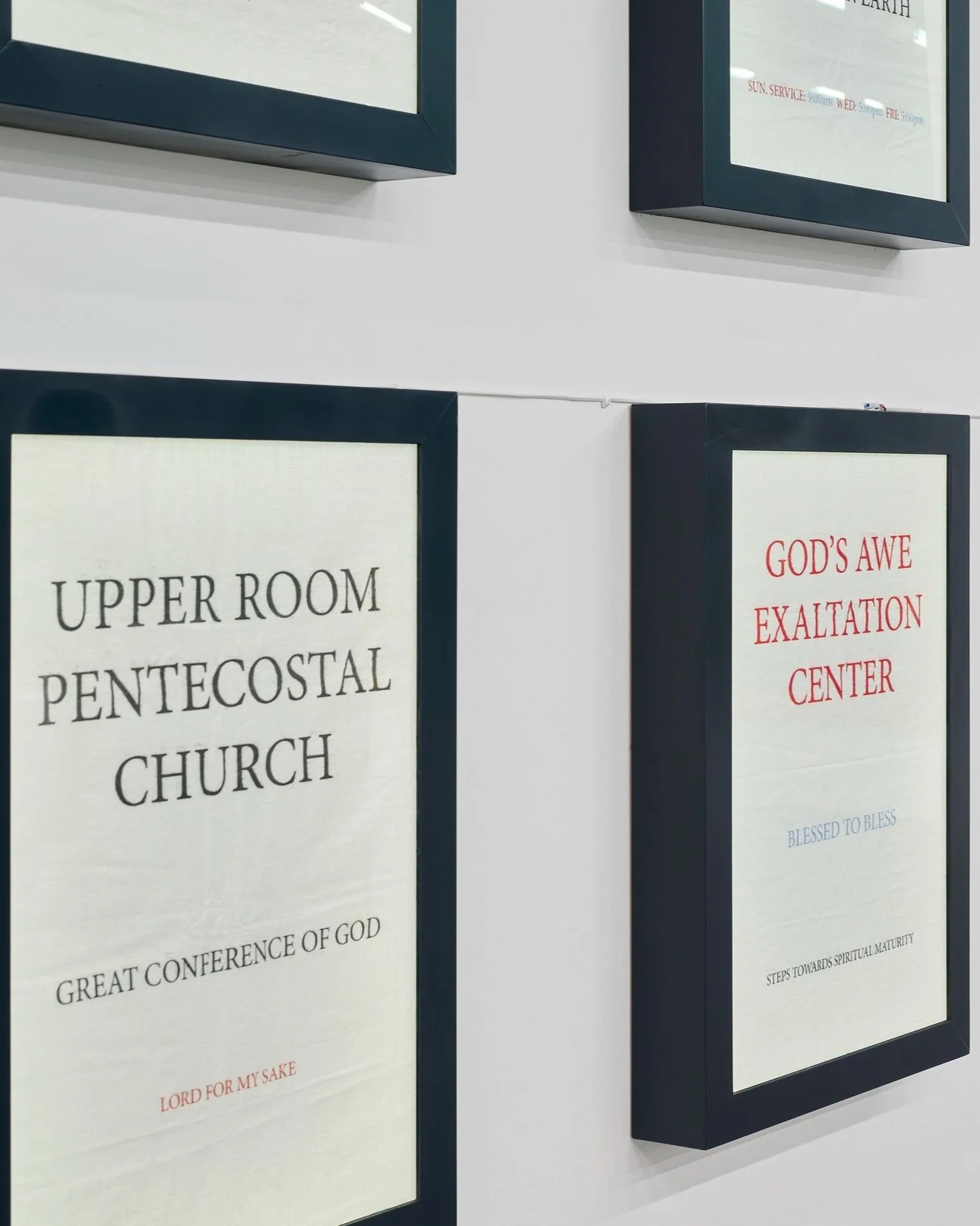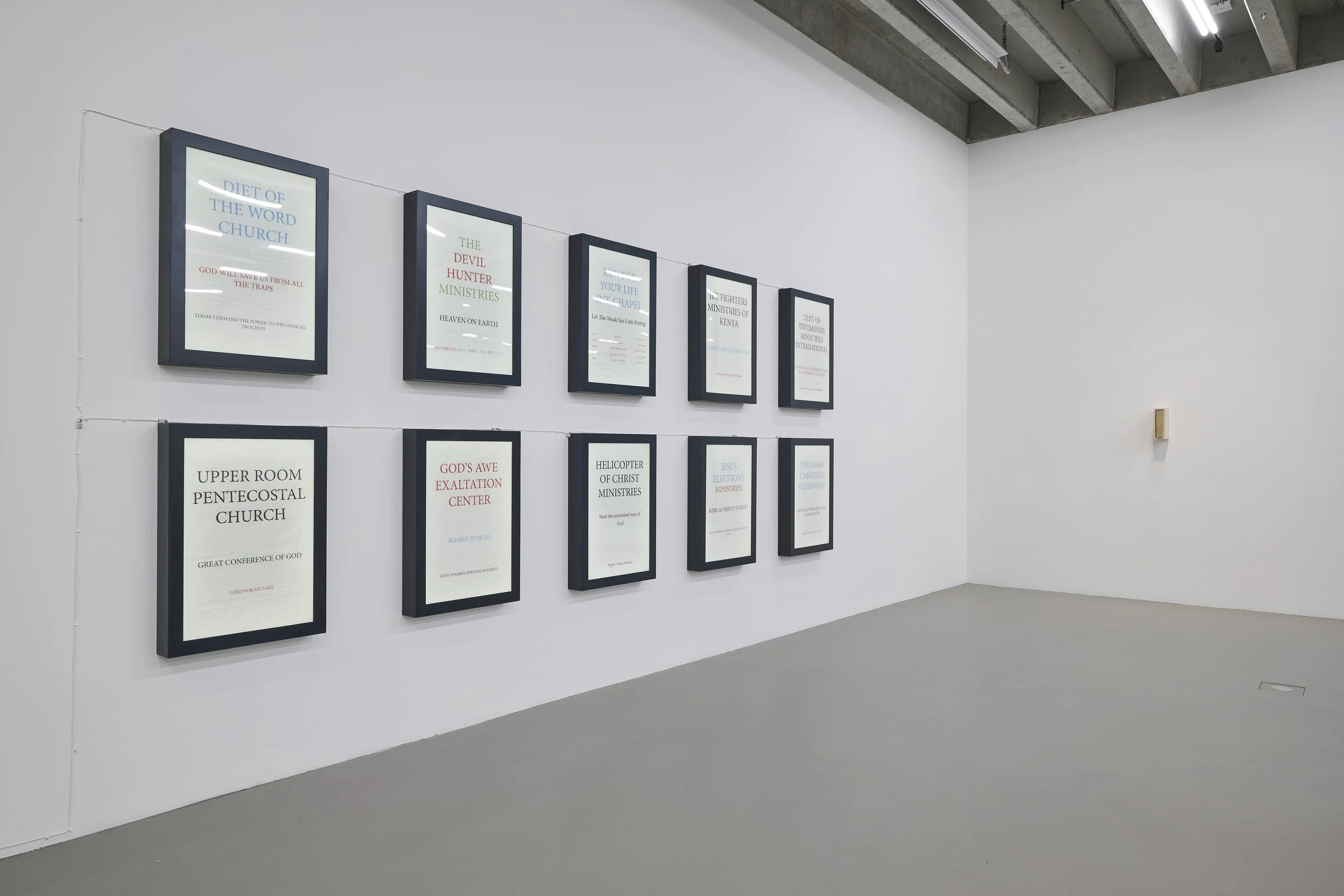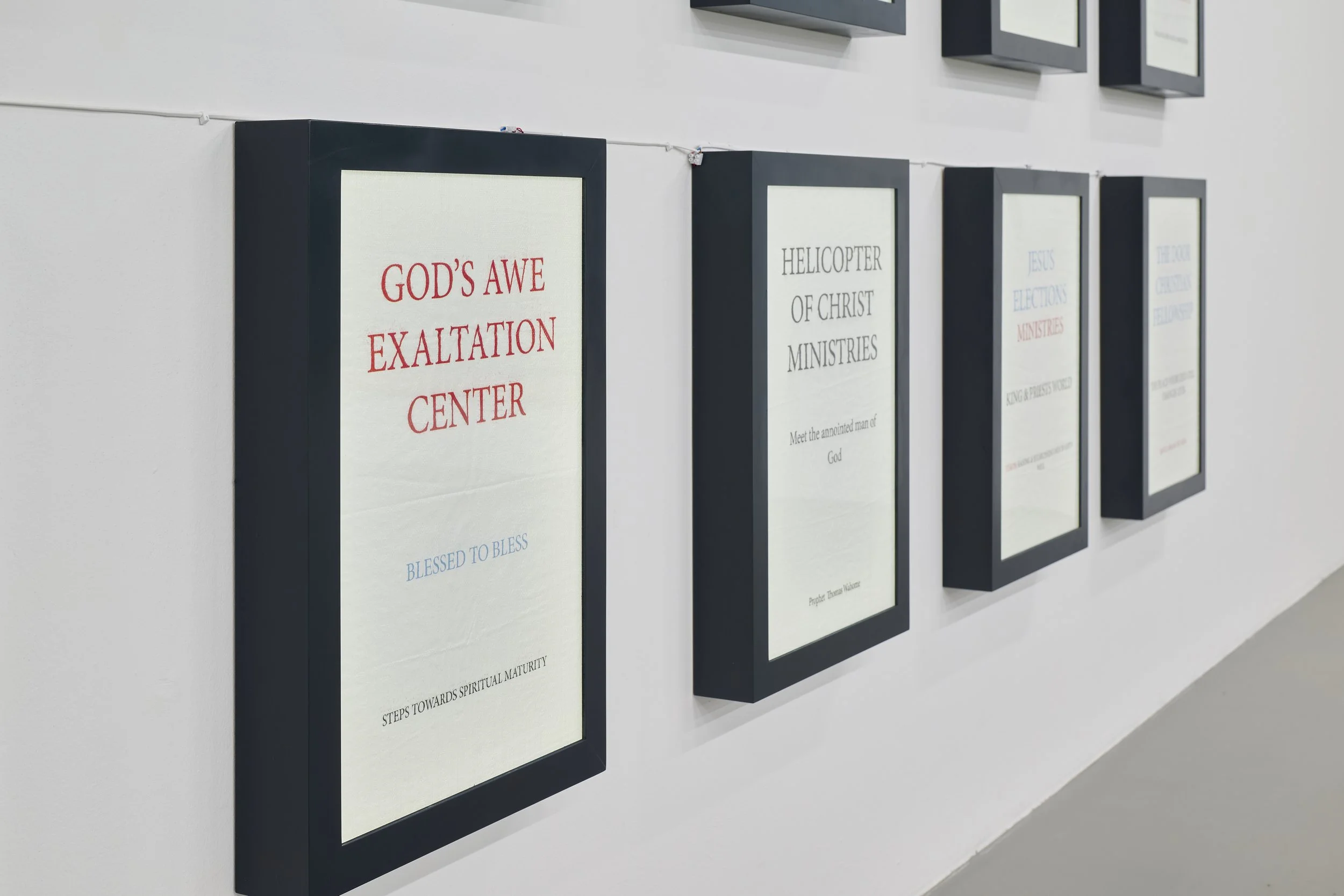
Merchants of Sacred Favour
Installation size 180cmx450cm | 80cmx58cm per box | MDF | Burlap sacks | UV Printed Texts | Plexiglas | COB LED lights | Computer programming
The artwork looks at the rapid influx of Charismatic Pentecostal Churches, which under the disguise of protestant belief values have attracted large numbers of Christians both in Kenya and the rest of Africa. There has been a tremendous increase in the number of churches in the country due to the proposed law of the right to worship and the Structural Adjustment Programs (SAP) in the 1980s that paved the way for American evangelical missionaries in Kenya. Merchants of Sacred Favour explores the notion of worship and the power dynamic that accompanies it: What does it mean to have the right to worship and the parameters that foster neoliberal-sacrilegious tendencies e.g., dominating phenomena such as speaking in tongues, visions, healing prophesies, and staged miracles? The work emphasizes the superficial nature of spiritual attraction based on disseminating the gospel with exuberant communication through graphic advertisements in public spaces in Kenya. As radiance is a severe pulling power in advertisement, the use of sign writings, posters, banners, and billboards is prevalent in the urban cities of Nairobi and Kisumu. The advertisements embody enormous texts of comfort and sometimes paradoxical church names e.g., Helicopter of Christ Ministries. On a larger scale, this also reflects the constant influence of media, music, and advertisements: All this omnipresence comes from political and religious propaganda. The work consists of custom-made light boxes and selections of posters with texts borrowed from prevalent church advertisements in Kenya printed on 75x45cm sheets of woven polypropylene also known as burlap. The burlap is typically used to make sandbags that are filled with sand or soil and used for such purposes as flood control and military fortification. These 75x45 cm size sandbags are also prevalent in Kenya for carrying cash crops i.e. crops that are planted to sell on markets or for export to make profits e.g. potatoes, rice, and wheat. These 10 light boxes wall-hanging installation involves simulating public artwork. Its purpose is to also convey the multiplicity of the protestant churches found in Kenya in each neighborhood. Also, in the numerology, the meaning of 10 is deeply profound. It combines the energies of 1 and 0, representing new beginnings and the universe’s infinite potential. This number signifies the exploration of life paths while seeking divine guidance and blessings that can be intertwined with the biblical Ten Commandments. The combination of these elements expresses visual surrealistic occurrence by forming a contradictory state of objects’ co-existence, borrowing from the protestant church advertisements in Kenya and the lightbox prevalent in German advertisements in malls and streets. The flickering light effects portray numerous online adverts and click baits prevalent on the internet webs as a luring tactic. The promise of a better life – a spiritual one, a meaningful one – is omnipresent in physical and digital advertising. Especially when combined with religious implications. Generally, Merchants of Sacred Favour explores and uncovers the commodification of Christianity to the congregants as a remedy against despair and spiritual absolution

Photo courtesy of Jakob Mewes & Tim Albrecht
Video courtesy of Mohammad Poori


